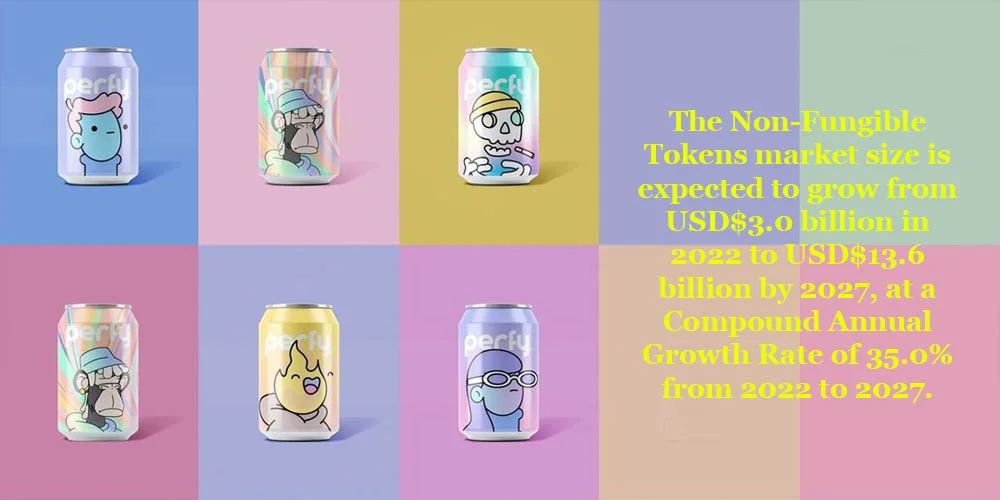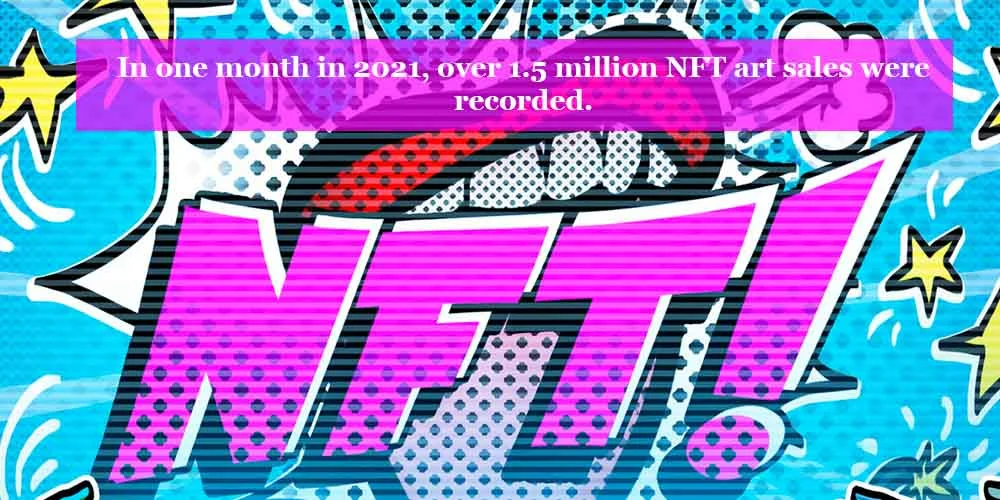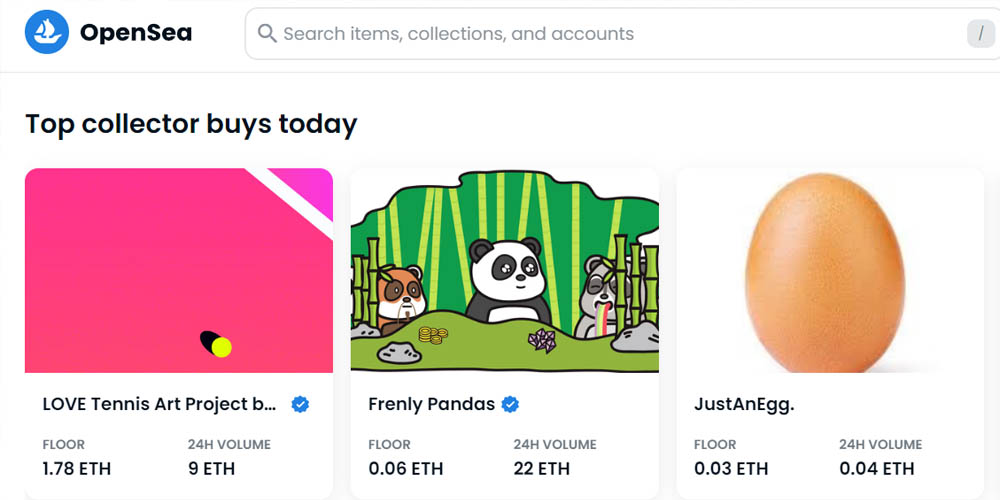Different creators sell their artwork on the web at really high prices. Commonly, they’re great artists with years of experience creating and selling digital art and other NFTs. However, that’s not always the rule. There are some novice artists who are just starting, and their art sometimes also reaches incredible prices! We assume this is your goal. If so, then in this guide, you’ll learn How to Price an NFT. Keep reading and learn everything about this topic.
Which Factors Determine NFT Prices?
Just like in real life, prices in the virtual world are determined by a series of factors you need to know well. Supply and demand are the most common factors, but some other costs and factors still enter the equation.
Costs
When establishing the floor price of any piece of your NFT project, you must consider all the extra and obligatory costs. Below, we describe the fees you’ll have to pay when selling NFTs.
- Creation costs. Here you need to consider all you need to pay to create the NFT, such as hiring a specialized artist. You can also look at the technology required to create a 3D model in the NFT ecosystem.
- Gas fees. When entering blockchain technology, you need to pay minting costs or gas prices to reward people working on the blockchain. The gas fees fluctuate continuously in the NFT world, so be aware of the current price.
- Listing fees. You pay listing fees when your NFT creation becomes available on a secondary market.
- Platform commission fees. You make this extra payment when your NFTs are purchased on a secondary marketplace. Commission fees correspond to a percentage of the final purchase price.
- Escrow fees. These fees correspond to the amount you pay when getting the money out of your wallet. Generally, you have to pay between USD$30 and USD$55 for a minting process alone.
Rarity and Functionality
Rarity is the most critical factor in setting the digital asset’s value. Like most things, a rare NFT is priced higher than a common NFT. Two factors determine the rarity of the NFT:
- The asset’s type. NFTs are priced differently according to the nature of those assets. For example, a physically painted asset is rarer than a digital image created by typical nonfungible token artists.
- The supply. The rarity of an NFT is directly related to the total supply of that NFT. Consequently, its price is also strictly related to this. A limited-edition NFT will be more expensive than a non-fungible token with 10,000 copies.
Functionality is another fundamental factor when you price NFTs. In this NFT world, utility NFTs are more valuable than other nonfungible tokens that do not provide any function. Collectors use functional NFTs to access certain benefits and features and participate in brand collaborations. So, consider providing an additional service to your potential buyers and target audience.
Brand and Visibility

Every successful artist needs to develop consistent work throughout their NFT journey. Displaying passion and dedication and showcasing their NFT collections on multiple platforms is crucial to gain visibility and recognition.
Reaching the same sales and mainstream fame as the most famous NFT artist involves marketing your name to the audience. This way, social media can familiarize future NFT owners with the digital artwork of the artist.
Besides, working with platforms and other artists will allow you to build a strong clientele and leverage opportunities that any open market may offer you.
Consistent Sales to Establish a Proof-of-Concept
To constantly raise the price of your NFT, you must make consistent sales to establish a suitable proof of concept. An NFT collection or particular digital asset raises its price according to its popularity. If you sell two NFTs at the lowest price and these successful peers are sold on a secondary market, their prices will rise considerably. This way, you’ll gain profit for royalties.
Availability and Maintenance of Pricing
When selling NFTs, your prices should be consistent across all platforms. The work of the most famous NFT artists is valuable in all the marketplaces, regardless of whether the market is big or small.
Unlockables
Creating unlockable content adds value to your NFT since it provides unique functionality to content holders and owners. When a customer buys a non-fungible token, they can gain access to hidden content.
Including unlockable content in your NFTs is a good habit, in addition to increasing their value and rarity. Some good unlockables are physical products, redeemable discounts, unique video clips, and more.
Product Value
One question you should ask yourself before the minting process is whether your product is valuable. Remember that there are hundreds or thousands of NFTs and just a few buyers on one platform, so creating a valuable digital token is essential to stand out.
To create a valuable digital asset, most artists enter the NFT world checking hyped trends and artwork. They study and keep an eye on them and develop their own standing creations, keeping in mind they need to stay unique.
How to Price Your NFT

It’s believed that pricing NFT is an intuitive process, and it’s just enough to check the community and see the prices. But this is not exactly true. Let’s find out what every budding NFT artist should know.
Do Some Research
The first step to defining NFT prices is to know the market and familiarize yourself with this phenomenon, NFTs collections, websites, and more. As it happens in the traditional art world, NFT artists must immerse themselves in the vast ocean of artistic creation and related marketplaces. Too many artists forget to do this and fail when determining the right NFT price. First, learn everything about the NFT space to create a valuable piece of art that sells incredibly.
Choose an NFT Marketplace
Although it is better to leverage several NFT marketplaces on the Internet, selecting one is also mandatory to put a big part of your efforts there. Both perspectives have advantages and disadvantages.
Going all-in on one marketplace is recommended to position your NFT like a fine art piece and gain attraction, but at the same time, it could be more challenging since it will take more time to sell your artwork.
Don’t Forget the Selling Costs
In this article’s first section, we already mentioned the costs involved in NFT sales and pricing. Consider these costs when you price your NFTs. Otherwise, you can lose money when selling it.
Remember to include exchange fees if you need to cover crypto wallet or marketplace fees. Other aspects, such as functionality, add extra costs to the final price.
Be Patient
When you’re an artist and want to adopt the best NFT pricing strategy, you first need to understand that it may take a while. Selling a piece of NFT art may take several months.
This is more difficult if you created a limited edition since the price of each NFT may be over average. If this is the case, your NFTs can be in a showcase for months. But do not be discouraged. If you’re not working full-time as an artist or are not in a hurry to sell your physical space, then be patient: soon, you’ll be listing nonfungible tokens and selling them.
Choose Between Auction, Fixed Price, Royalties, or a Combination of Them
There are several ways to establish a price on an NFT market. The most common ways are:
- Fixed price.
- Auction.
- Royalties.
Fixed price is the most common option for pricing NFTs. Here, as its name indicates, you clearly define the value proposition so customers and buyers know the price from the beginning.
The second alternative is most used by NFT sellers who quickly sell their creations and wait for the best price possible. Here you have two options: limited auction or unlimited auction. In the first option, you establish a clear deadline for when the auction finishes. In the second, there is no deadline, so auctions keep running.
In both alternatives, buyers decide how much they want to pay to acquire the NFT.
Enter Low but Raise Your Floor Regularly
Entering a new space where artists sell their creations for tens of thousands of dollars can accelerate your heart and encourage you to create more digital assets. And this is great! The downside is that you can set a higher price than other creations for your NFT. Be careful; this can be a bit dangerous.
Maybe you’re not a famous artist, or you’re just starting. For this reason, you should set a lower price, at least in the beginning. Then, according to the perceived value of your artwork, you can raise it steadily and regularly.
Set a Fair Price
Once you consider all the factors mentioned above, you’ll be capable of setting a price in a typical price range. This is a good starting point. Still, as we know you want to achieve outrageous success, we recommend you find a good spot between production costs and what NFT holders are willing to pay. You’ll set an average price, which is more than enough for one starting artist.
Find out more about Identifying How Much Is My NFT Worth With Quick Steps
How to Price Your NFT on OpenSea

One of the leading NFT marketplaces where you can set higher prices is OpenSea, likely the biggest NFT platform worldwide. Pricing your NFTs here is straightforward. Now, we describe the steps you need to complete to price your digital asset.
- Head to your profile by clicking the profile button at the screen’s top right corner.
- Choose the NFT you want to sell from your wallet or follow the steps to create your own non-fungible token.
- Click “sell” at the top right corner.
- Select the price method, i.e., fixed price or timed auction. Set the fixed price to avoid speculation or select the auction method to bet on the best price.
- You can also set the item aside for a specific buyer by selecting “reserve for specific buyer” in the “More options” section.
- Sign and confirm the listing price of your crypto art. Of course, a new window indicates when your artwork is listed.
How to Price an NFT – Final Thoughts
We know you don’t create art just for love. You want to sell NFTs at the right price and get a good profit; you deserve it! No matter if you’re an established artist or not, thanks to this brief guide, you can leverage the smart contract and quickly sell higher-priced NFT.
Finally, we recommend you browse different NFT platforms and check the market data and the most common types of NFTs sold there. This way, you’ll have a general idea of the market prices. This knowledge will give you a significant advantage and allow you to set pertinent floor prices for your creations.
Last but not least, remember that on NFTmonk, we are continuously collecting information about the latest trends in the NFT market and providing useful guides to help you create and sell high-quality non fungible tokens.